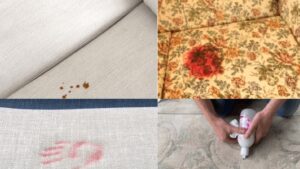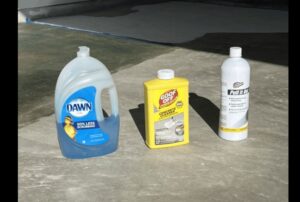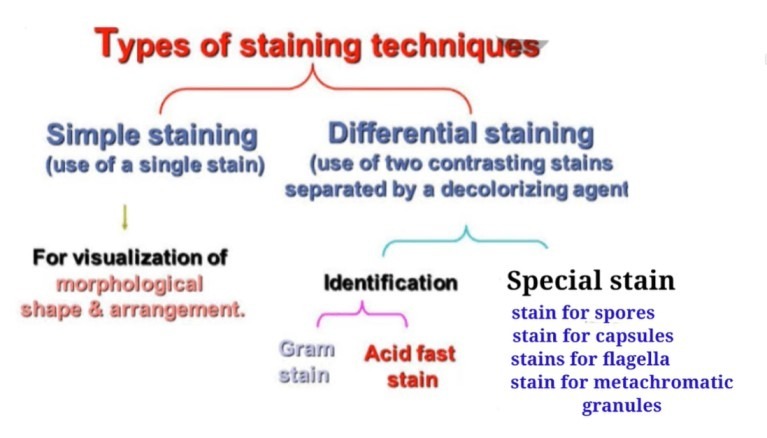To remove stains from sofa at home, use baking soda or a fabric cleaner spray. Baking soda can be effective in lifting and removing stains from couch cushions, while fabric cleaner sprays provide a strong and targeted solution.
Understanding Different Types Of Stains On Sofas
When it comes to maintaining the cleanliness and appearance of your sofa, dealing with stains can be quite a challenge. From accidental spills to stubborn marks, different types of stains require different cleaning methods. In this section, we will explore the common types of sofa stains, how they affect different sofa materials, and how to identify the type of stain on your sofa.
Common Types Of Sofa Stains
To effectively remove stains from your sofa, it is crucial to understand the common types of stains that can occur. Here are some of the most common stains that can mar the beauty of your sofa:
| Stain Type | Description |
|---|---|
| Food and Drink Stains | These stains are caused by spills of food, beverages, and condiments, leaving behind unsightly marks. |
| Ink and Marker Stains | Accidental ink or marker stains can often be stubborn and require special attention during the cleaning process. |
| Grease and Oil Stains | Grease and oil stains can be particularly challenging to remove, as they tend to penetrate deep into the fabric. |
| Pet Stains | If you have pets, you might have to deal with urine, vomit, or other types of pet stains on your sofa. |
| Water Stains | Water stains can occur when water is spilled on the sofa, leaving behind discolored patches that can be difficult to remove. |
How Different Stains Affect Different Sofa Materials
Not all sofa materials are created equal when it comes to stain resistance. Different stains can have varying effects on different types of sofa materials. Here’s a breakdown of how different stains can affect common sofa materials:
- Fabric Sofas: Fabric sofas are prone to absorbing stains quickly, making it necessary to act fast when spills occur. Different fabrics may react differently to stains, so it’s essential to check the care instructions for your specific sofa fabric.
- Leather Sofas: Leather sofas are generally more resistant to stains compared to fabric sofas. However, certain stains like ink and oil can be more challenging to remove from leather surfaces.
- Microfiber Sofas: Microfiber sofas are known for their stain-resistant properties. However, certain stains like oil or grease may require additional cleaning methods to effectively remove them.
Identifying The Type Of Stain On Your Sofa

Identifying the type of stain on your sofa is crucial as it will help you choose the most appropriate cleaning method for effective stain removal. Here are some tips to help you identify the type of stain on your sofa:
- Observe the color and texture: Examine the stain closely and note its color, texture, and any accompanying odor. This can provide clues about the type of stain.
- Consider the source: Think about the recent activities or events that might have led to the stain. For example, if you recently had a gathering with food and drinks, there’s a higher chance of encountering food and beverage stains.
- Perform a spot test: Before applying any cleaning solution, it’s always a good idea to perform a spot test on a small, inconspicuous area of your sofa to ensure it doesn’t cause any damage or discoloration.
By understanding the different types of stains, how they affect sofa materials, and how to identify them, you’ll be better equipped to tackle any stains that might appear on your sofa. In the following sections, we will delve into specific stain removal techniques for different types of stains and sofa materials.
Preparing For Sofa Stain Removal
Before you begin the process of removing stains from your sofa, it is important to adequately prepare. This will ensure that you have all the necessary cleaning supplies, create a clean and safe workspace, and perform a pre-test of cleaning products to avoid any damage to your sofa.
Gathering The Necessary Cleaning Supplies
To effectively remove stains from your sofa, you will need to gather the following cleaning supplies:
- A mild detergent or upholstery cleaner
- Warm water
- White vinegar
- Baking soda
- Soft cloths or sponges
- Bucket or spray bottle
- Old toothbrush or soft-bristle brush
- Vacuum cleaner with upholstery attachment
Having these supplies on hand will make the stain-removal process more convenient and efficient.
Creating A Clean And Safe Workspace
Next, ensure that you have a clean and safe workspace before tackling the sofa stains. Follow these steps:
- Clear any clutter or objects from the area surrounding the sofa to prevent accidents or obstacles.
- Vacuum the sofa to remove any loose dirt or debris before applying cleaning solutions.
- Place a plastic or vinyl drop cloth on the floor or surrounding area to protect it from any spills or drips during the stain removal process.
Taking these precautions will help prevent any additional mess or damage to your living space.
Pre-testing Cleaning Products On A Small, Inconspicuous Area Of The Sofa

Before applying any cleaning products or solutions to the visible areas of your sofa, it is crucial to perform a pre-test on a small, inconspicuous area. Follow these steps:
- Choose a hidden spot on the sofa, such as the back or bottom, to prevent any potential damage or discoloration.
- Apply a small amount of the cleaning product or solution onto a cloth or sponge.
- Gently dab or rub the solution onto the test area.
- Wait for a few minutes and observe any changes in color or texture.
- If there are no negative effects, such as fading or fabric damage, it is safe to proceed with the stain removal process.
Performing this pre-test will give you confidence in using the cleaning product on your sofa without risking any unwanted damage.
Remember to always read and follow the instructions provided on the cleaning product labels.
By adequately preparing for sofa stain removal, you can ensure a smooth and successful cleaning process. Gather the necessary cleaning supplies, create a clean and safe workspace, and perform a pre-test to avoid any mishaps. With these preparations in place, you are now ready to tackle those stubborn sofa stains.
Removing Water-based Stains From Sofas
Remove water-based stains from your sofa at home with these easy tips. Use baking soda to lift and remove stains, and neutralize odors. Alternatively, create a cleaning solution with vinegar and dish soap for a powerful stain remover.
Step-by-step Process For Removing Water-based Stains
| Step | Procedure |
|---|---|
| 1 | Blot stain immediately with a dry cloth to remove excess liquid; avoid rubbing to prevent spreading. |
| 2 | Check sofa’s care label for approved cleaning solutions; most can use mild dish soap and warm water. |
| 3 | Dilute mild dish soap in warm water to create a soapy solution. |
| 4 | Test cleaning solution on a small, inconspicuous area to ensure no discoloration or fabric damage. |
| 5 | Gently dab cleaning solution onto water-based stain, working from the outside towards the center. |
| 6 | Continue dabbing until stain lifts; avoid rubbing to prevent fabric damage. |
| 7 | Blot the area with a clean, damp cloth to remove any remaining soap residue. |
Recommended Cleaning Products For Water-based Stains

| Product | Description |
|---|---|
| Resolve Upholstery and Multi-Fabric Cleaner (Shop on Amazon) | A versatile cleaner suitable for many fabric types. |
| Folex Instant Carpet Spot Remover (Shop on Amazon) | An effective spot remover for upholstery stains. |
| Woolite Advanced Stain & Odor Remover + Sanitize (Shop on Amazon) | Designed to lift tough stains and eliminate odors. |
| Blue Coral Upholstery Cleaner (Shop on Amazon) | A high-quality cleaner for deep upholstery cleaning. |
| Method Stain and Odor Treatment Spray (Shop on Amazon) | A natural and eco-friendly cleaner for fabric stains. |
| Bissell Little Green Multi-Purpose Portable Carpet and Upholstery Cleaner (Shop on amazon) | A compact and powerful cleaner for spot cleaning. |
Techniques For Effective Stain Removal
- Blot, don’t rub: Always blot the stain with a clean cloth or sponge to prevent it from spreading or pushing it deeper into the fabric.
- Work from the outside in: Start cleaning from the outer edge of the stain and gradually work towards the center. This technique helps contain the stain and prevents it from spreading further.
- Test before applying: Before using any cleaning solution on your sofa, test it on a small, hidden area to ensure it doesn’t cause any discoloration or damage.
- Patience is key: Removing water-based stains may take multiple attempts. Be patient and repeat the cleaning process as necessary until the stain is completely gone.
- Professional cleaning: For stubborn or set-in stains, it’s recommended to seek professional upholstery cleaning services for optimal results.
Removing Oil-based Stains From Sofas
Oil-based stains can be particularly tricky to remove from sofas. Whether it’s a greasy food spill or an accidentally dropped oily substance, these stains can leave unsightly marks on your beautiful sofa. But don’t worry, with the right process and cleaning products, you can effectively remove oil-based stains and restore your sofa’s pristine appearance. Below, we outline the step-by-step process, recommended cleaning products, and effective techniques for removing oil-based stains from sofas.
Step-by-step Process For Removing Oil-based Stains

- Begin by blotting the stained area with a clean cloth or paper towel to remove any excess oil. It’s important not to rub the stain, as this can spread the oil and make it more difficult to remove.
- Next, sprinkle a generous amount of baking soda directly onto the stain. Baking soda acts as a natural absorber and helps to draw out the oil from the fabric.
- Leave the baking soda on the stain for at least 15 minutes to allow it to work its magic.
- After the baking soda has had time to absorb the oil, gently brush it off using a soft-bristled brush or vacuum cleaner with a brush attachment.
- If the stain is still visible, create a cleaning solution by mixing equal parts water and dish soap. Dampen a clean cloth with the solution and blot the stain, working from the outer edges towards the center.
- Continue blotting until the stain is no longer visible. Be sure to avoid rubbing the stain, as this can push it deeper into the fabric.
- Once the stain is removed, rinse the area with clean water and blot it dry with a clean cloth or paper towel.
- Allow the sofa to air dry completely before using it again.
Recommended Cleaning Products For Oil-based Stains
| Cleaning Product | Description |
|---|---|
| Forcefield Fabric Cleaner | A powerful cleaner specifically designed to remove tough stains, including oil-based stains, from fabric surfaces. |
| OxiClean Carpet and Upholstery Cleaner | An effective cleaner that can remove oil-based stains from both carpets and upholstery. |
| Bissell Fabric and Upholstery Cleaner | A versatile cleaner suitable for removing oil-based stains from many fabric and upholstery surfaces. |
Techniques For Effective Stain Removal
- Blot, don’t rub: Remember to always blot the stain instead of rubbing it, as rubbing can spread the oil and make the stain worse.
- Act quickly: The sooner you can treat an oil-based stain, the better chance you have of successfully removing it. Prompt action can prevent the stain from setting into the fabric.
- Test in an inconspicuous area: Before using any cleaning product, test it on a hidden or inconspicuous area of the sofa to ensure it doesn’t cause any damage or discoloration.
- Follow the manufacturer’s instructions: Make sure to read and follow the instructions on the cleaning product’s label for optimal results and to avoid any potential damage to your sofa.
Removing Stubborn Stains From Sofas
Dealing with stubborn stains on your sofa can be a challenging task. Whether it’s an ink stain, wine spill, or pet accident, it’s essential to tackle the stain promptly and effectively. In this section, we’ll explore specialized techniques for specific types of stains and also provide additional tips and tricks for successful stain removal.
Dealing With Stubborn Stains That Are Difficult To Remove
Some stains can be incredibly stubborn and refuse to budge easily. However, with the right approach, you can successfully remove them from your sofa. Here are some steps to tackle those tough stains:

- Blot the stain with a clean cloth or paper towel to remove any excess liquid or residue.
- Create a cleaning solution by mixing mild dish soap with warm water.
- Dip a clean cloth into the solution and gently dab the stained area, avoiding vigorous rubbing to prevent spreading the stain.
- Rinse the cloth in clean water and repeat the dabbing process until the stain starts to fade.
- For particularly stubborn stains, you can try using a specialized stain remover that is safe for your sofa’s fabric. Always check the product instructions and test it on a small, inconspicuous area first.
- Once the stain has been successfully removed, use a cloth dampened with plain water to rinse the area and remove any remaining soap residue.
- Blot the treated area with a clean towel to remove excess moisture and allow it to air dry.
Specialized Techniques For Specific Types Of Stains
Not all stains are created equal, and certain stains may require a different approach for effective removal. Here are some specialized techniques for specific types of stains:
| Stain Type | Technique |
|---|---|
| Ink Stains | Apply rubbing alcohol to a clean cloth and gently blot the stain. Avoid rubbing, as it can push the ink deeper into the fabric. Repeat until the stain is gone, and then rinse the area with plain water. |
| Wine Stains | Blot the stain with a clean cloth to remove excess liquid. Mix equal parts hydrogen peroxide and dish soap, and apply the solution to the stain. Let it sit for a few minutes, then blot with a clean cloth. Rinse with water and blot dry. |
| Pet Stains | Blot the stain with a clean cloth to remove any solid residue. Mix equal parts white vinegar and water, and apply it to the stain. Let it sit for a few minutes, then blot with a clean cloth. Rinse with water and blot dry. |
Additional Tips And Tricks For Successful Stain Removal
Besides to the specialized techniques mentioned above, here are some additional tips and tricks to help you successfully remove stains from your sofa:
- Act quickly: The sooner you address a stain, the better chance you have of removing it completely.
- Read the care instructions: Before applying any cleaning solution or technique, always check the care instructions provided by the sofa manufacturer to ensure you don’t damage the fabric.
- Test in an inconspicuous area: Before applying any cleaning solution to the stained area, test it on a small, hidden spot of the sofa to ensure it doesn’t cause any discoloration or damage.
- Use a white cloth or towel: When blotting or dabbing the stain, choose a white cloth or towel to avoid transferring any color onto the fabric.
- Blot, don’t rub: Vigorous rubbing can spread the stain and damage the fabric. Always blot gently to remove the stain.
- Leave it to dry: Allow the treated area to air dry naturally to prevent any potential damage from heat or excessive moisture.
FAQs on How to Remove Stains From Sofa at Home
What are some common stains that can occur on a sofa?
Common stains on a sofa can include food spills, beverage stains, ink marks, pet urine, and grease marks.
Can I remove stains from my sofa at home?
Yes, many stains can be successfully removed from a sofa using household items and simple cleaning techniques.
How can I remove food stains from my sofa?
To remove food stains, gently scrape off any solid residue, blot the stain with a clean cloth or paper towel, and then apply a mixture of mild dish soap and warm water. Blot the stain until it is lifted, and then let the area air dry.
What should I do if I spill a beverage on my sofa?
If you spill a beverage on your sofa, quickly blot the area with a clean cloth or paper towel to absorb as much liquid as possible. Then, mix a solution of equal parts water and white vinegar and gently dab the stain. Repeat as necessary and allow the area to air dry.
How can I remove ink marks from my sofa?
To remove ink marks, first, blot the stain with a clean cloth or paper towel to absorb any excess ink. Then, apply rubbing alcohol or a specialized ink stain remover to a clean cloth and gently dab the stain. Continue until the stain is gone, and then let the area air dry.
What can I do to remove pet urine stains from my sofa?
To remove pet urine stains follow below steps:
1. Start by blotting up as much liquid as possible with a clean cloth or paper towel.
2. Mix a solution of equal parts water and white vinegar, and then apply it to the stain.
3. Blot the area until the stain is lifted, and then sprinkle baking soda on the spot to neutralize any odor.
4. Vacuum the baking soda after it has dried.
Conclusion
To remove stains from your sofa at home, there are several effective methods you can try. From using baking soda to vinegar and dish soap, these natural ingredients can tackle different types of stains and leave your sofa looking fresh and clean.
It’s important to act quickly and blot excess liquid before applying any cleaning solution. Remember, preparation is key when it comes to removing stubborn stains. With these tips in mind, you’ll be able to enjoy a pristine sofa in no time.
Share the joy

Written By Helen Whitehead
Helen is the third generation in her family to work in the furniture industry. She has extensive knowledge in all aspects of the field. She is skilled in both standard furniture design and in making bespoke adjustments to fit a variety of locations. She's also knowledgeable on the best materials and finishes for furniture as well as how to care for them.